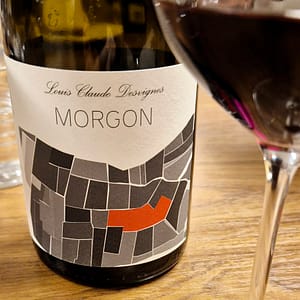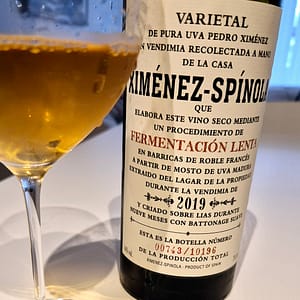Last Monday my local wine club served a dozen of Morgon wines. Most of them originate from the various climats that make up the appellation. This one is from a small climat called Douby, next to the famous Côte de Py.
Domaine Louis-Claude Desvignes is located in the town Villié-Morgon, that gives name to the Morgon appellation in Beaujolais. Today it’s run by eighth generation, the siblings Claude-Emmanuelle and Louis-Benoît Desvignes. They work their soils in the most natural way possible. No synthetic products are used in the vineyards, and the work in the cellar is carried out with as little intervention as possible.
Their Morgons are made without aging in wood. Instead they spend some time in concrete vats. The macerations depends of the wine. In preparing the tasting I also tried their Morgon Voûte Saint-Vincent. That one is macerated only for ten days and aimed at earlier consumption, while other bottlings see longer macerations.
This wine comes from an 80 year old 1 hectare vineyard in Douby. Here at this place called Château Gaillard the soil is sand and granite. The harvest is manual and the vinification traditional with 10% of the grapes destemmed. Fermentation lasts 10 days, then the wine is aged in cement vats for 7 months.

Morgon Château Gaillard 2021 (Louis Claude Desvignes)
Deep cold cherry colour. Intense aroma of cherry and flowers, with chalk and earth. Quite powerful in the mouth with fresh fruit, an integrated acidity and young fine-grained tannins. I think the 21s in the tasting had benefitted from one year more than the 22s. Still this one is probably at its best after 4-5 more years.
Price: Medium
Leave a Comment









